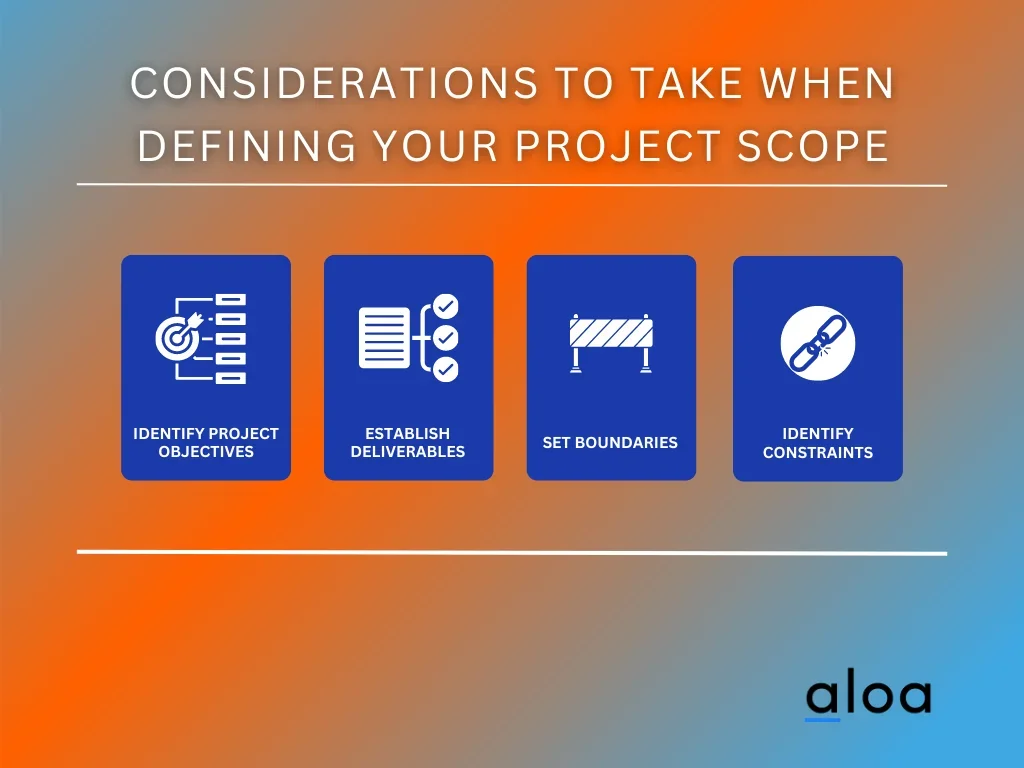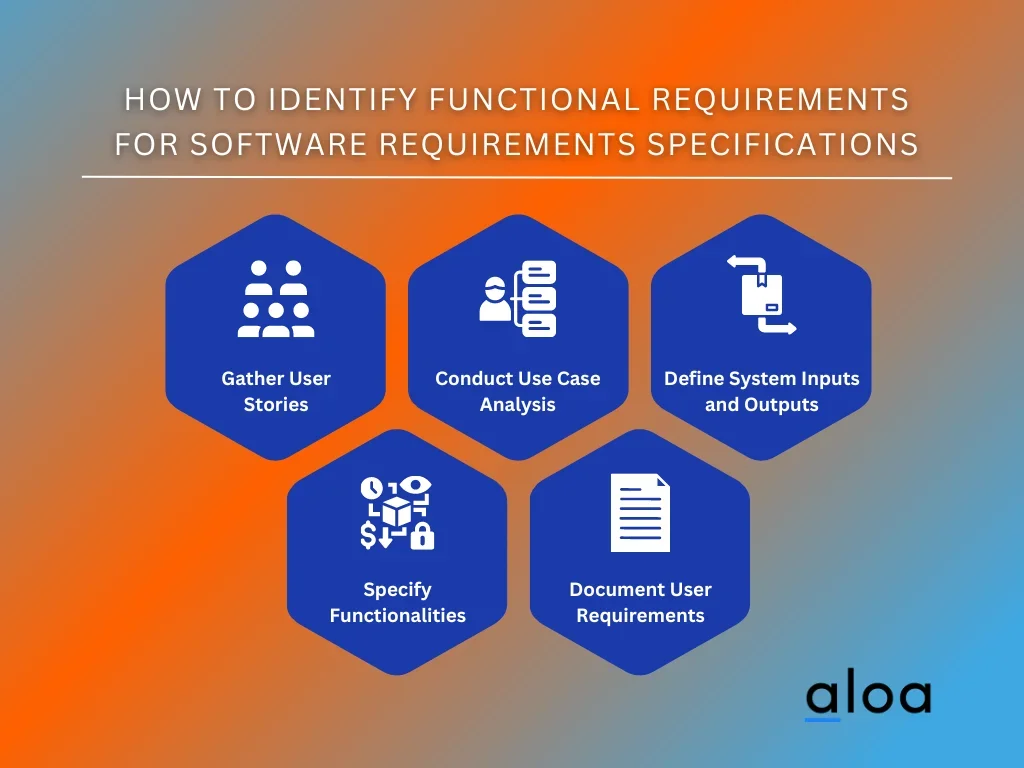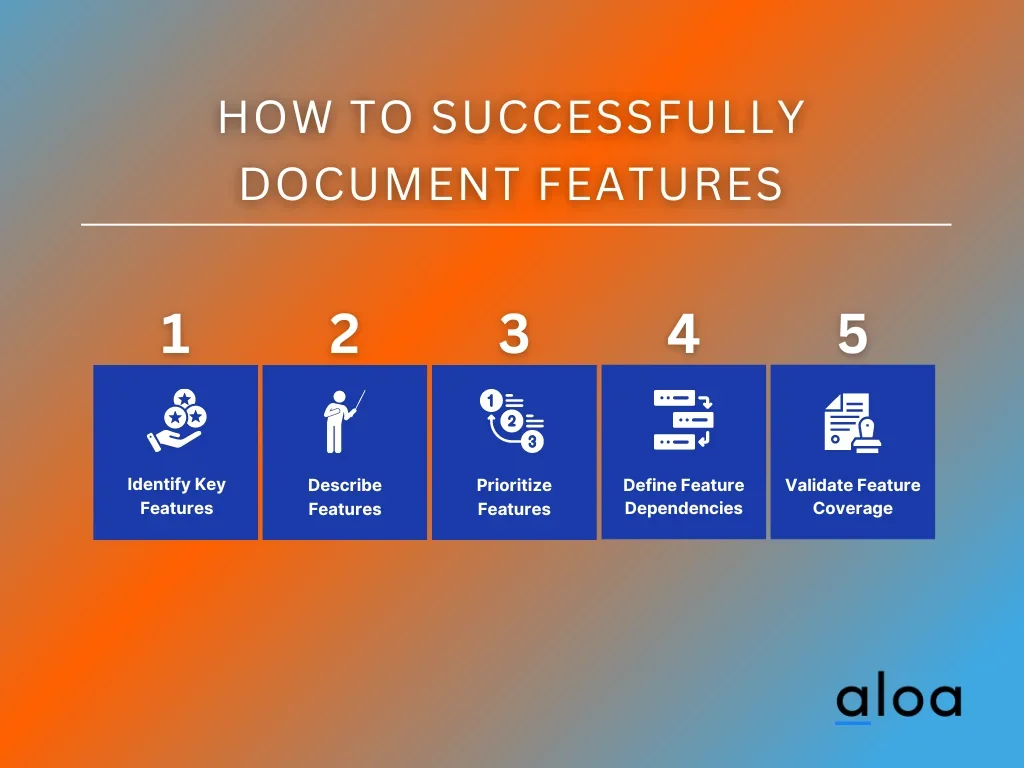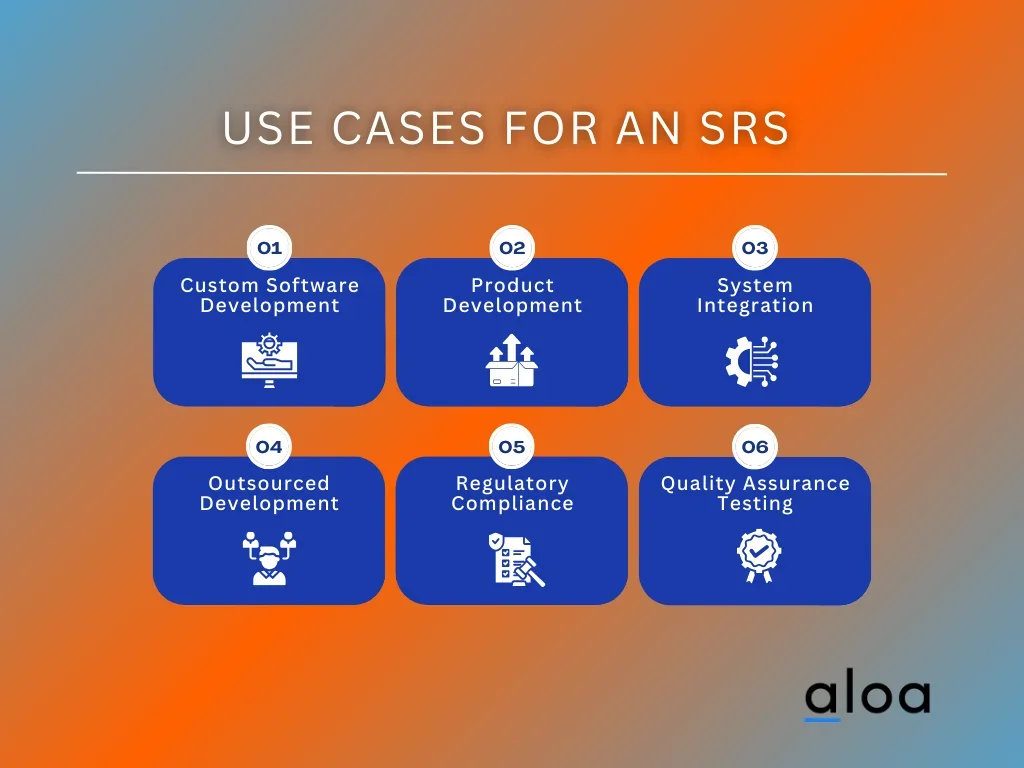In software development, understanding what is SRS is crucial for success. SRS, serving as a project roadmap, outlines a system’s functional and non-functional requirements. This clarity in requirements ensures effective communication among team members, guiding the development process smoothly and facilitating the achievement of project milestones.
At Aloa, a software outsourcing firm renowned for its rigorous vetting process, we’ve selected 10,000+ software agencies worldwide to connect you with the finest developers. Our extensive network includes software developers proficient in various development aspects, including SRS. With Aloa’s commitment to delivering Performance Reports, you’ll receive regular updates on your project’s progress to ensure transparency and confidence at every step.
This blog will delve into SRS or Software Requirements Specification documents, unraveling their importance and critical components in product development. By the end, you’ll have a comprehensive understanding of a good SRS document and its role in guiding the success of your entire project.
Let’s dive in!
What is SRS (Software Requirements Specification)?
In software development, understanding what is SRS is important as it outlines a software system’s functional and non-functional requirements. It serves as a blueprint or a development roadmap for the entire development process, providing a clear and detailed description of what the software should do and how it should perform.
Creating a Software Requirements Specification (SRS) involves thorough communication and collaboration between stakeholders, including clients, developers, testers, and project managers. It requires a deep understanding of the project’s goals, user needs, and technical aspects. With its significance in the development process, SRS document evolves throughout the project lifecycle, with updates and revisions to accommodate changes and feedback.
The SRS document typically includes the following sections:
.webp)
- Introduction: Provides a brief overview of the software project, outlining its purpose, goals, and stakeholders. It sets the context for the rest of the document and helps readers understand the project’s significance.
- System Overview: Gives a comprehensive understanding of the software system by describing its scope, boundaries, and context within the larger environment. It defines the problem domain and establishes the foundation for the following requirements.
- Functional Requirements: Specify the specific functionalities and interactions expected from the software system. They outline how the system should respond to different inputs under various conditions.
- Non-functional Requirements: Unlike functional requirements, non-functional ones focus on the quality attributes of the software rather than its specific functionalities. This section addresses performance, security, usability, reliability, and scalability.
- System Features: Enumerates and describes the features or functionalities the software system will offer its users. It provides a detailed breakdown of the system’s capabilities, including primary and secondary features.
- Constraints: Constraints refer to any limitations, restrictions, or conditions that affect the design, development, or implementation of the software system. This section identifies constraints related to technology, resources, budget, regulations, or other factors that may impact the project.
How To Create an SRS (Software Requirements Specification) Document
In knowing what SRS is, it is also crucial to understand how to create one to ensure clarity and precision in software development projects, especially concerning your tech stack development. Here’s a detailed guide on how to create a Software Requirements Specification (SRS) document effectively, guiding you through the process step by step.
%20Document.webp)
Step 1: Gather Requirements
In creating and understanding what is SRS, gathering requirements is the first step of creating an SRS (Software Requirements Specification) document, where the project team collects and documents the needs and expectations of stakeholders. This process involves engaging with various stakeholders, including clients, end-users, project managers, and developers, to understand the project’s objectives, scope, and constraints.
Interviews, surveys, and workshops are commonly used to gather insights and requirements effectively to address the needs of all stakeholders. The information gathered during this phase will then serve as the foundation for the SRS document, ensuring that it accurately captures the project’s requirements and aligns with stakeholder expectations.
Step 2: Define the Scope of Your Software Project
Defining the scope of your software project is an important step in defining what is SRS and how to create one. It involves outlining the boundaries and objectives of the project to establish what will be included and excluded. This step is crucial to ensure the project remains focused, manageable, and aligned with the desired outcomes, preventing scope creep and budget overruns.

Here are a few considerations to take in defining your project scope:
- Identify Project Objectives: Clearly define the goals and objectives of the software project to provide a clear direction for the development team and stakeholders.
- Establish Deliverables: Define the deliverables that will be produced as part of the project, such as software modules, features, or documentation.
- Set Boundaries: Determine the project’s boundaries by identifying what will be included and excluded, including functionalities, features, and target user groups.
- Identify Constraints: Identify any constraints or limitations that may impact the project’s scope, such as budget, time constraints, technological limitations, or regulatory requirements.
Step 3: Identify Functional Requirements
Creating and evaluating what is SRS involves identifying functional requirements. It involves specifying the specific functionalities and interactions expected from the software system to meet user needs and achieve project goals. This step is essential to ensure that the software performs the desired functions and meets the intended objectives, guiding the development process effectively.
Here’s how to identify functional requirements:

- Gather User Stories: Collect user stories from stakeholders to understand the desired features and functionalities from the end-user’s perspective.
- Conduct Use Case Analysis: Analyze use cases to identify the various interactions and behaviors the software system must support to fulfill user requirements.
- Define System Inputs and Outputs: Identify the inputs the system requires to perform specific functions and the corresponding outputs generated.
- Specify Functionalities: Clearly specify the functionalities and features the software system must include to meet user needs and achieve project objectives.
- Document User Requirements: Document user requirements in a clear and structured manner, ensuring that they are unambiguous.
Step 4: Specify Non-Functional Requirements
In analyzing what is SRS, non-functional requirements are an important section of the document. Specifying non-functional requirements is a critical aspect of creating an SRS document, as it addresses the quality attributes of the software system. These requirements focus on performance, security, usability, reliability, and scalability.
Non-functional requirements are often expressed as metrics or criteria for evaluating the software’s performance and quality attributes. Additionally, they serve as a benchmark for testing and validating the software system to ensure it meets the specified non-functional requirements.
Step 5: Document System Features
Documenting system features involves listing and describing the specific functionalities or capabilities the software system will offer its users and any additional information necessary to understand its capabilities fully. This step is crucial to clearly understand the system’s capabilities and ensure alignment with user needs and project objectives.
To document features successfully, consider the following:

- Identify Key Features: Identify the primary features or functionalities that the software system must include to fulfill user requirements and achieve project goals.
- Describe Features: Provide detailed descriptions of each feature, including its purpose, functionality, and related requirements or dependencies.
- Prioritize Features: Prioritize features based on their importance and relevance to the project objectives, considering user needs, business priorities, and technical feasibility.
- Define Feature Dependencies: Identify any dependencies or relationships between features, specifying how they interact and any dependencies that must be satisfied for certain features to function correctly.
- Validate Feature Coverage: Validate that the documented features cover all necessary functionalities and capabilities required by the software system, ensuring comprehensive coverage and alignment with user needs.
Step 6: Review and Revise
Reviewing and revising the SRS document is crucial in software development to ensure accuracy, completeness, and consistency. This phase thoroughly scrutinizes the document to validate its alignment with the project objectives and stakeholder expectations.
The SRS document is also revised to accommodate changes or updates to the project scope, requirements, or objectives, especially when starting a new project. Additionally, a systematic approach is adopted to track revisions and document the revision history. This meticulous process enhances the overall user experience by ensuring the software meets users' evolving needs and expectations.
Software Requirements Specification Example Template
In exploring what is SRS, it’s essential to grasp the significance of an SRS template. These templates serve as invaluable guides that provide structured frameworks for documenting project requirements comprehensively.
Here is a sample template that you may use, along with a brief description of what it covers:
I. Introduction
- Overview of the document’s purpose and scope.
- Description of the software project and its objectives.
II. Scope
- Definition of what is included and excluded from the project.
- Identification of any constraints or limitations.
III. Functional Requirements
- Detailed description of specific functionalities and interactions expected from the software.
- Use cases or scenarios illustrating how the system should behave in various situations.
IV. Non-functional Requirements
- Specification of quality attributes such as performance, security, usability, and reliability.
- Metrics or criteria for evaluating the software’s non-functional aspects.
V. System Features
- List of features or functionalities that the software will offer to its users.
- Description of each feature, including its purpose and any related requirements.
VI. Constraints
- Identify any limitations or restrictions affecting the software’s design, development, or implementation.
- Consider factors such as technology, resources, budget, regulations, etc.
VII. Assumptions and Dependencies
- Assumptions made during the requirements gathering process.
- Dependencies on external systems, software components, or third-party services.
VIII. Documentation References
- List of references to other documents or resources relevant to the SRS.
- Links to related documents such as design specifications, user manuals, etc.
IX. Revision History
- Record the changes to the system requirements specification document, including dates and descriptions of revisions.
This template provides a structured framework for a clear understanding of what is SRS and its example for documenting software requirements. Generally, having this template on hand ensures clarity and precision in any software development projects.
Use Cases for an SRS
Exploring what is SRS extends to its practical applications, including its use cases. These use cases serve as invaluable tools that offer concrete examples of how an SRS can be applied in the real world. Here’s a closer look at some key use cases for an SRS:

SRS Use Cases in Custom Software Development
In custom software development, knowing “what is SRS” and its use cases is crucial for several reasons. SRS is a foundational document that outlines the specific requirements and functionalities tailored to the client’s needs.
With SRS, developers who are experts in software engineering can clearly understand the client’s vision, goals, and constraints. This enables them to streamline the development process and ensure the final product aligns with the client’s expectations.
Additionally, an SRS facilitates effective communication between the client and the development team that allows for feedback and adjustments throughout the development lifecycle.
SRS Use Cases in Product Development
In product development, an SRS serves as a critical document outlining the specifications and functionalities of the envisioned product. It provides a clear roadmap for the development team, ensuring that the product aligns with market demands and user expectations.
Once laid out, it documents detailed requirements so that product development teams can effectively communicate project objectives, features, and constraints across all stakeholders.
SRS Use Cases in System Integration
Researching what is SRS and its use cases in system integration is crucial in aligning disparate systems and technologies to work seamlessly. It outlines the requirements for integrating various systems, including data exchange protocols, communication interfaces, and interoperability standards.
This comprehensive approach facilitates the efficient exchange of data and functionality across diverse platforms, ultimately optimizing system performance and enhancing overall operational efficiency.
SRS Use Cases in Outsourced Development
An SRS in outsourced development is crucial for effective communication between the client and the outsourcing team. It clearly defines the project requirements, objectives, and expectations, ensuring alignment between all parties.
Having a comprehensive SRS provides the outsourcing team the roadmap to guide their development process seamlessly and help mitigate misunderstandings or discrepancies.
SRS Use Cases in Regulatory Compliance
In regulatory compliance, an SRS ensures that software systems meet industry-specific regulations and standards. It meticulously outlines the functionalities, security measures, and data handling protocols required to adhere to regulatory guidelines.
Organizations can demonstrate compliance with regulatory bodies and mitigate legal risks associated with non-compliance by documenting these requirements in an SRS.
SRS Use Cases in Quality Assurance Testing
A tailored SRS serves as a foundational document in quality assurance testing that guides robust testing efforts. This provides detailed requirements and expected outcomes for the software system, allowing QA testers to create comprehensive test cases.
With its pivotal role in the development lifecycle, SRS serves as a benchmark for evaluating the success of QA efforts and identifying any deviations from the specified requirements.
Key Takeaway
Understanding what is SRS or Software Requirements Specification is essential for a successful product development process. With a well-defined SRS, stakeholders can align their objectives, mitigate misunderstandings, and deliver high-quality software solutions that meet end users’ needs.
Embracing the principles of SRS empowers teams to navigate the complexities of software development especially in establishing your project structure. This enables them to tackle challenges with clarity, precision, and confidence in their project's direction and execution.
Want to learn more about what is SRS in software development? Explore the Aloa blog page to discover insightful articles and resources that delve deeper into the topic. Unlock the secrets to effective SRS implementation and optimize your software development projects with Aloa’s expert guidance.

%20A%2B%20Guide.webp)